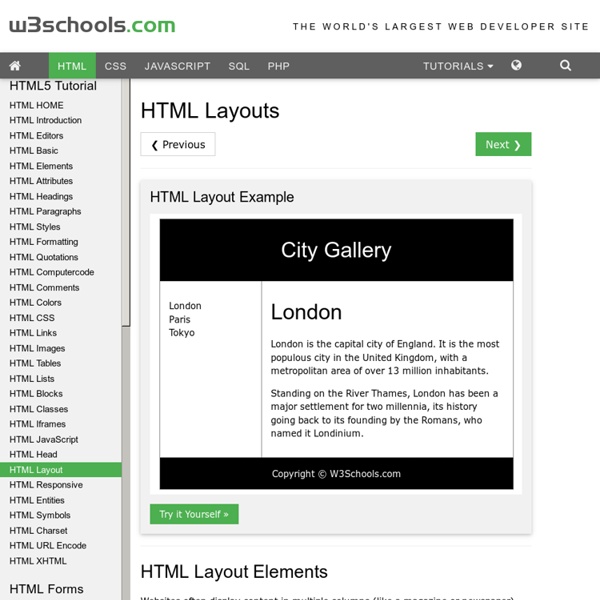



HTML Source: HTML Tutorials HTML Entities Responsive Web Design: 50 Examples and Best Practices - Designmodo Responsive web design term is related to the concept of developing a website design in a manner that helps the lay out to get changed according to the user’s computer screen resolution. More precisely, the concept allows for an advanced 4 column layout 1292 pixels wide, on a 1025 pixel width screen, that auto-simplifies into 2 columns. Also, it suitably fixes on the smartphone and computer tablet screen. This particular designing technique we call “responsive design”. Now you can test your website using the Responsive Design Tool. Responsive web designing is an entirely different designing version than traditional web designing, and developers (especially fresher) must know about the pros and cons of responsive web designing. Pages that include data tables pose a special challenge to the responsive web designer. Images in responsive web designs are called context-aware. Designmodo Designmodo has a very clean and clear design with a perfect responsive design interface. Simon Collison
HTML Forms and Input Grid Layout & Flexbox City CSS GRID LAYOUT is nearly finalized. Which means it’s time for designers and front-end developers to set the flags enabling their browsers to support the new specification, put CSS Flexbox through its paces by using it to create layouts, and see if anything breaks. This way, if anything does break, we’ll have time to tell the framers of CSS Grid Layout what happened, and get the spec (and browser support) fixed before it is released. The links below can help you (and me) get up to speed with the new tech: CSS Grid Layout and CSS Flexbox Links Thank You Additional link curation by Rachel Andrew, author of Get Ready for CSS Grid Layout from A Book Apart, and speaker extraordinaire at An Event Apart Nashville, a three-day conference that wrapped yesterday.
HTML Text Formatting 15 delicious examples of card-based web design The rise of the smartphone has ushered in a new way of thinking among web designers and developers, who need to create websites that work on smaller screens. The constraints of smaller screens have actually helped the web to become that little bit more modular, with responsive design now one of the foremost web design trends: pages can be broken up into their constituent parts, and reordered on the fly, depending on browser or screen sizes. Content spread over three or four columns can be repositioned into just one. This has refocused attention on 'cards', as a design pattern for displaying information in bite-sized chunks. What is a card, exactly? Cards were one of my 18 web design trends for 2014, and I wanted to highlight some beautiful examples of card-based user interfaces. Wander Card A picture and brief description, plus icons that convey further information. Mail Client A concept by Roman Shkolny. Food widget Cards, like your smartphone, don't always have to remain in portrait mode.